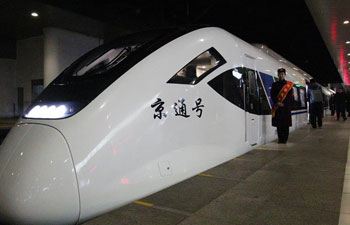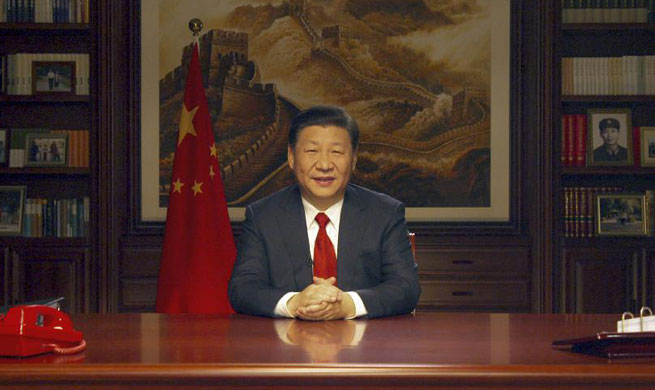SEOUL, Jan. 1 (Xinhua) -- South Korea's export hit a record yearly high in history in 2017 thanks to strong demand for major export items, a government report showed Monday.
Export, which accounts for about half of the export-driven economy, reached a new yearly high of 573.9 billion U.S. dollars in 2017, up 15.8 percent from the previous year, according to the Ministry of Trade, Industry and Energy.
It was the biggest since the related data began to be compiled in 1956. The daily average exports also hit a fresh high of 2.13 billion dollars last year.
Import in 2017 advanced 17.7 percent over the year to 478.1 billion dollars, sending last year's trade surplus to 95.8 billion dollars.
The country's trade, including both export and import, was 1.05 trillion dollars in 2017, topping the 1-trillion-dollar mark in three years.
South Korea's export took up 3.6 percent of the global total in 2017, ranking the sixth-biggest exporting country.
Major export items gained ground. Semiconductor export hit a fresh high of 97.94 billion dollars in 2017, up 57.4 percent from the previous year.
Exports for oil product and petrochemical advanced by a double digit last year on expensive crude oil. Ship export jumped 23.6 percent, with those for locally-made steel product and general machinery growing 20 percent and 10 percent respectively.
Export for telecommunication devices such as smartphone tumbled 25.5 percent as local manufacturers increased production in overseas factories. Shipments for auto parts and home appliances shed 9.5 percent and 22.5 percent each last year.
By country, export to China, South Korea's biggest trade partner, advanced 14.2 percent in 2017 from a year earlier. Shipment to the United States rose 3.2 percent, with those to the European Union (EU) and Japan posting a double-digit expansion.
Exports to Vietnam and India jumped 46.3 percent and 30 percent respectively, while shipment to the Association of Southeast Asian Nations (ASEAN) soaring 27.8 percent last year.
The trade ministry forecast that the country's exports would not show a rosy picture in 2018 as seen in 2017, citing downside risk factors such as the protectionist move globally, the local currency's appreciation to the dollar, higher interest rate and higher crude oil prices.
The ministry expected exports for chips, general machinery, petrochemicals and automobiles to grew this year, but those for ship, steel product and home appliances were forecast to fall this year amid lower product price and weak demand.
Meanwhile, export in the last month of last year posted 49.07 billion dollars, up 8.9 percent from a year earlier
Import in December advanced 13 percent over the year to 43.29 billion dollars, sending the December trade surplus to 5.78 billion dollars, the ministry data showed.
Demand for locally-made semiconductors continued in the last month of last year as memory chip prices stayed at a high level on supply shortage.
Exports for oil products and petrochemicals posted a double-digit increase on demand in major economies showing economic recovery. Crude oil prices kept rising, boosting the oil product price.
General machinery export expanded on rising infrastructure investment in major economics, the ministry said.
Exports for automobiles and car parts declined on less business days and partial labor strikes of local carmakers.



















